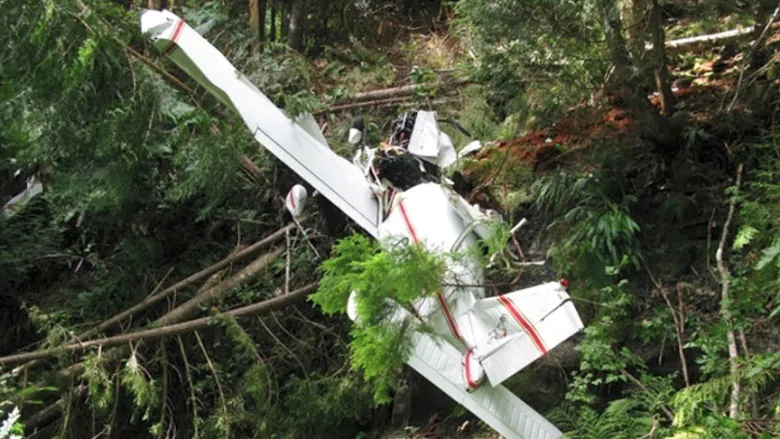A new report on the deadly crash in July, 2018, finds a combination of conditions were likely responsible
It was warm, sunny July afternoon when a family sightseeing flight last summer ended in the death of the pilot near Sechelt.
The man's family members — another man, a teenaged girl and four-year-old boy — were able to walk away from the small plane crash.
Now, a Transportation and Safety Board of Canada (TSB) report on the crash has revealed that no single factor can be blamed. Rather, a combination of several conditions likely caused the plane to collide with a tree shortly after take off.
"In this accident, the aircraft's performance decreased, resulting in its inability to climb above the terrain. This decrease in performance was not the result of a single factor," the report reads.
It goes on to list factors that contributed to the plane having difficulty getting airborne and climbing quickly enough to avoid the trees.
The aircraft took off with a tailwind.
The runway has a one per cent uphill slope.
The airplane was either at maximum gross weight or close to it.
The density altitude around the time of the accident was about 1,500 feet above sea level, though the airport is just 300 feet above sea level.
The plane passed over Chapman Creek before crashing and may have encountered downdrafts and turbulence.
The report found that the pilot, who isn't named, was qualified and certified for the flight, and there was no indication he was suffering from fatigue during the afternoon flight.
The plane was in the air for less than 30 seconds before colliding with trees.
The TSB calls its investigation limited in scope "to advance transportation safety through greater awareness of potential safety issues. It is not the function of the board to assign fault or determine civil or criminal liability."
The report does not make any recommendations but concludes with a simple safety note:
"Pilots must remain vigilant to changes in the factors that can affect the performance of their aircraft."

